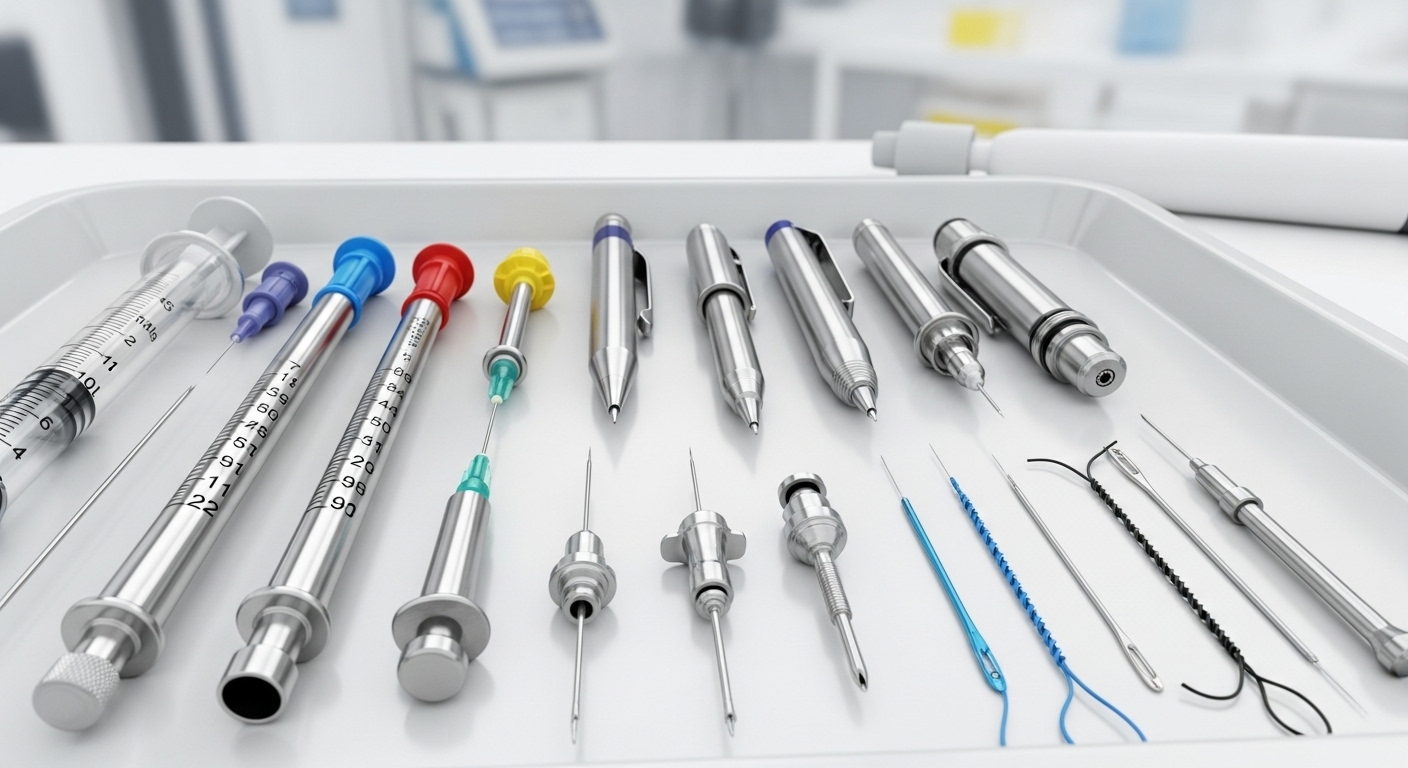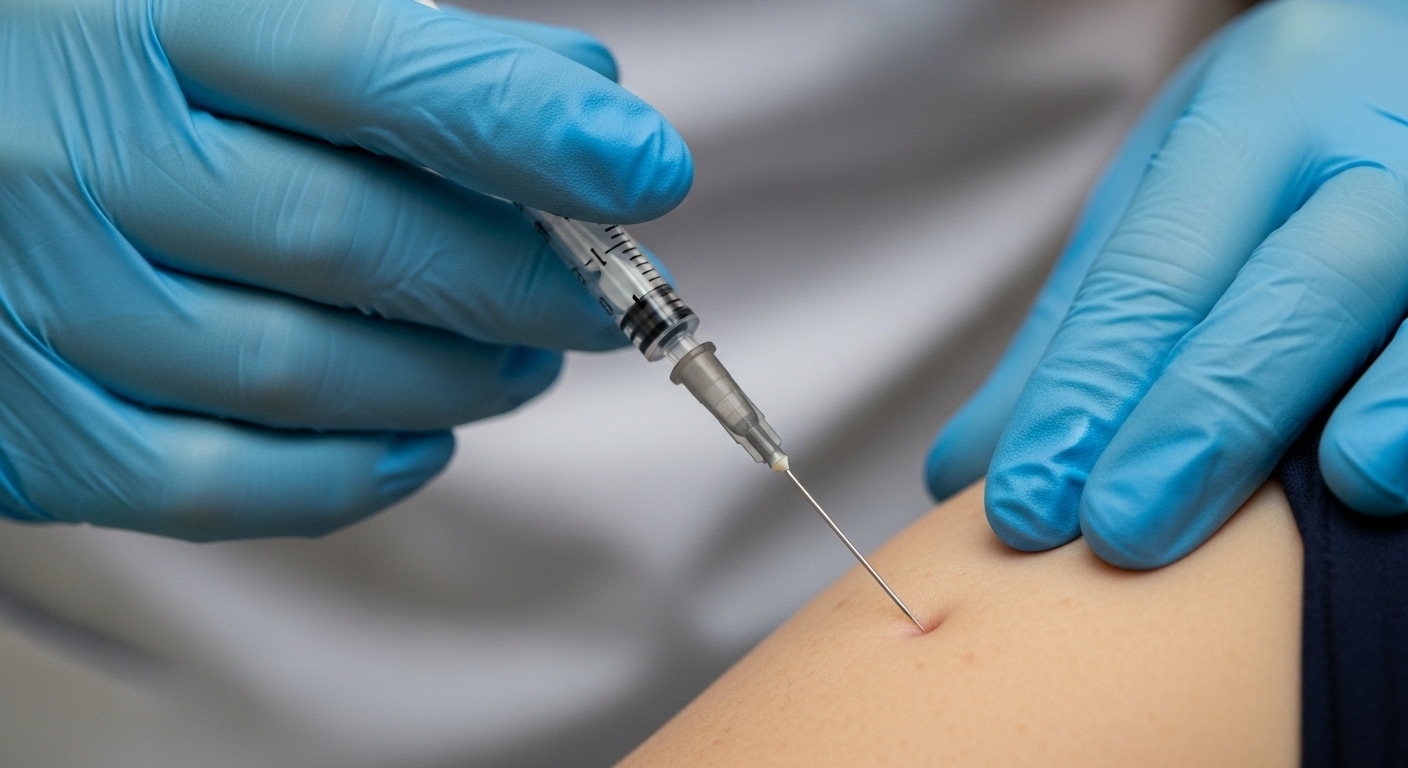A Guide to the Different Types of Medical Needles
Nov 24th 2025
Healthcare in the US uses many tools every single day. Just a quick look at any hospital reveals the frequency of use of needles, and it is obvious that knowing them is an important factor. A medical needle is considered to be one of the most widespread tools. These needles aid in the injection, tests and simple medical procedures. Millions of people receive injections or blood tests daily across the country. The need for safe and correct tools remains extremely high in every hospital or clinic. Learning about the different types of medical needles helps people make better choices. This knowledge also helps patients feel calmer during regular treatments. Many people explore needles and syringes when they want simple information. This guide shares clear details about how each needle works in daily care.
Medical needles come in many shapes and sizes for different tasks. Some needles help with quick injections, while others help collect samples. Each needle must match the job for safe and smooth healthcare. Many US healthcare workers choose needles after seeing patients' needs. Good knowledge supports better results during routine treatments. This guide explains each type in simple words for easier understanding.

Hypodermic Needles
Hypodermic needles are still widely used in US healthcare settings today. These needles help with injections, regular vaccines, and IV medication. They also help remove fluids during many basic procedures. Many clinics depend on these needles because they support fast medical work. The high number of injections given across the country increases demand daily. Healthcare workers must choose the right gauge for safe use. This makes knowledge of types of hypodermic needles extremely important.
People can explore helpful choices in hypodermic tools when needed. Many options offer different sizes for different injections. These choices support safe and accurate treatment with minimal discomfort. Hypodermic needles remain one of the most important medical needle types in everyday care. Their easy design makes them suitable for many common procedures.
Pen Needles
Pen needles help many people living with diabetes across the country. Millions of Americans rely on insulin every day for stable health. These needles attach to insulin pens for simple and quick injections. Their fine tips support a low-pain experience during daily treatment. Many patients prefer pen needles because they feel light and easy to handle. This makes self-injection less stressful for regular users.
People can explore how lengths and gauges vary in pen needles. These details help users pick the right size for safe injections. Pen needles support comfort because their design is gentle on the skin. Their short design also helps patients feel confident during daily care. Many diabetes patients rely on these tools because they add convenience. Pen needles remain an important part of the types of needles for injections in the US today.
Blood Collection (Venipuncture) Needles
Blood collection needles help draw blood for regular tests. Many labs across the US use these needles every single day. Millions of samples help doctors diagnose conditions or confirm normal health. Venipuncture needles remain essential for routine checkups and diagnostic work. Their design helps technicians get smooth access to the vein. Good control makes collection safer for the patient and the technician.
Many venipuncture needles work well with syringe barrels and syringes-with-needles. These tools together offer a strong grip and easy handling during collection. Smooth use reduces pressure on the vein and improves comfort. Venipuncture needles remain an important part of the injection needle types used daily. Their efficiency helps support accurate results in medical testing.
Biopsy Needles
Biopsy needles help collect tissue samples from different parts of the body. These samples help doctors diagnose concerns like cancer or organ disease. Many US hospitals perform numerous biopsies every year for clear results. A biopsy needle must collect tissue without harming nearby areas. This makes the design strong and precise for safe sample removal.
These needles help doctors understand what happens inside the body. They support early detection of conditions through small, targeted samples. Their work helps professionals create better treatment plans for patients. Biopsy needles remain a vital part of advanced medical needle types used today. Their accuracy makes them important for many life-saving tests.
Suture Needles
Suture needles help close wounds after injuries or surgeries. They help reconnect tissue safely to support good healing. Many outpatient procedures rely on these needles every single day. Suture needles come in different shapes, such as curved or straight designs. The shape helps doctors handle different parts of the body with ease.
Curved needles help with deeper tissue where access is limited. Straight needles help with surface-level stitching and simple closure work. The correct needle helps reduce time and increase comfort for patients. These tools make wound repair quicker and smoother in busy clinical settings. Suture needles play an important role among the types of needles medical professionals use. Their design supports fast recovery and safe healing after procedures.

Understanding the Application for Each Type
Every medical needle has a special purpose for different medical needs. Hypodermic needles help with most injections needed in regular care. Pen needles support patients who inject medications themselves at home. Venipuncture needles help collect blood samples for tests. Biopsy needles help remove tiny samples for deeper diagnostic work. Suture needles help close wounds safely after treatment.
Choosing the correct needle helps improve safety and comfort. People comparing tools often look at piston syringes, syringe barrels, and syringes with needles. These tools work together with many needle types for smooth results. Learning how they connect helps people understand injection needle types more clearly. This makes routine medical care easier for both users and professionals.
Conclusion
Each needle type provides a unique purpose in everyday care across the US. Some needles help with quick injections, while others support long-term treatments. Many needles also help diagnose problems before they become serious. Understanding these medical needle types helps users feel safer and more informed. Clear knowledge supports better decisions during healthcare experiences.
The US healthcare system continues to grow, increasing the need for safe tools. A good understanding helps people choose the right needle for each use. This adds confidence for patients, nurses, and doctors every single day.
If you want to explore these medical tools in more detail, you can check helpful groups like needles and syringes, pen needles, hypodermic needles, and syringes-with-needles. These groups support easier learning depending on what information you need.

